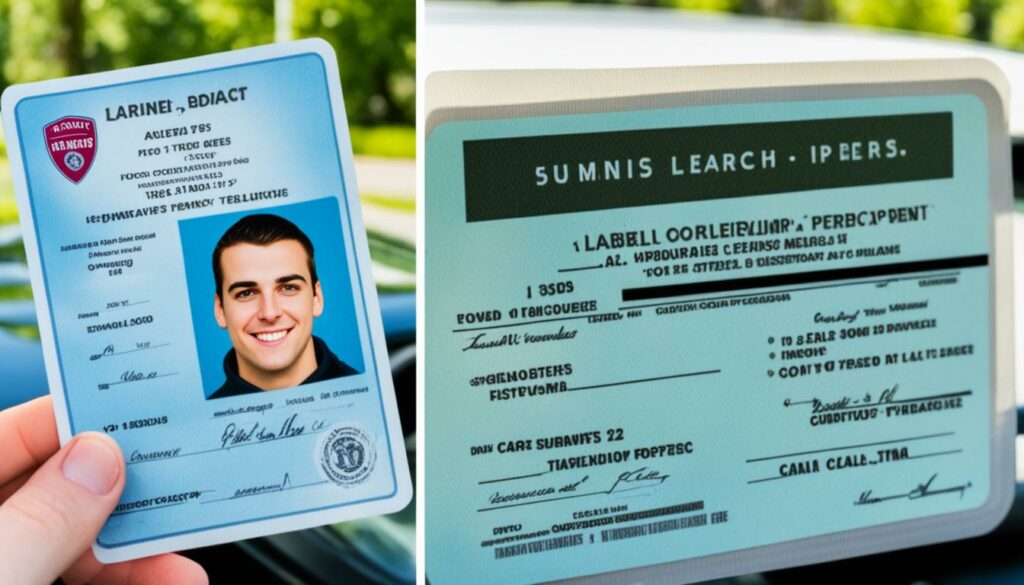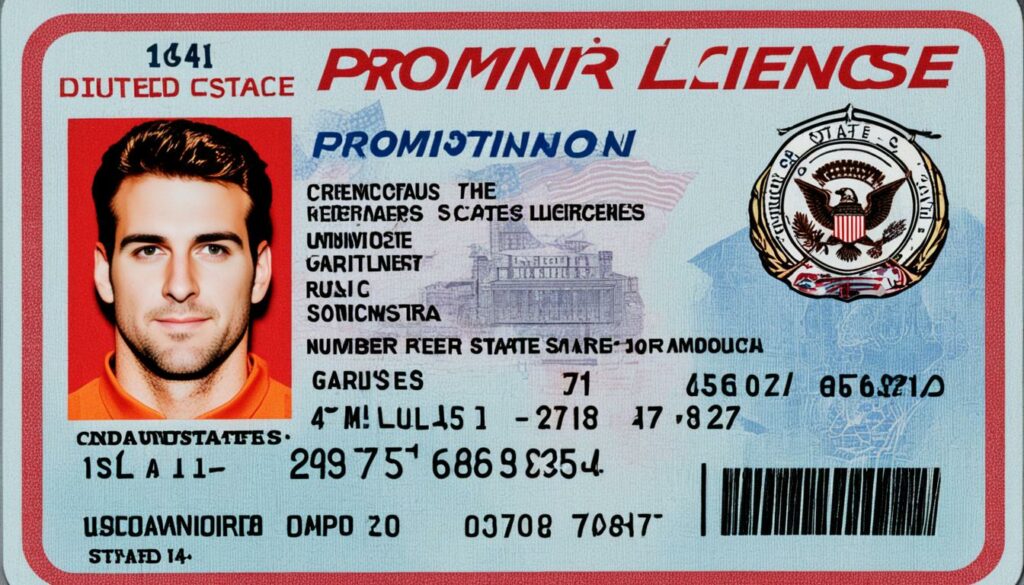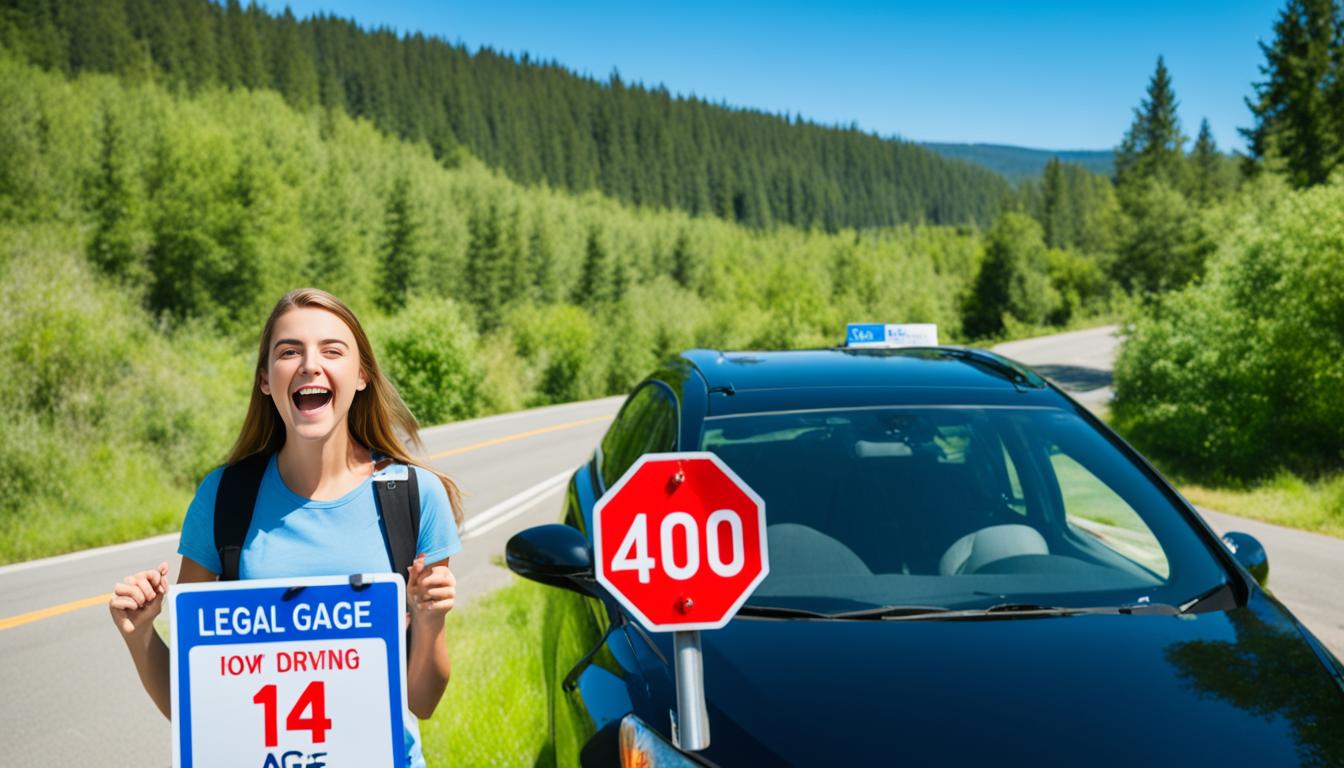Can 14 Year Olds Drive? Age Limit Insights
Learning to drive can be an exciting and stressful time for both parents and teenagers. Every state has different requirements for obtaining a learner’s permit and a driver’s license. Some states allow teenagers to get a permit at 14-and-a-half, while others don’t issue a full driver’s license until a person is 21. It’s important to understand the specific rules and regulations in your state regarding driving at 14.
Key Takeaways:
- Each state in the US has its own rules regarding the legal driving age for 14 year olds.
- The minimum age for a learner’s permit and a full driver’s license can vary from state to state.
- Teenagers may need to complete driver’s education courses and log a certain number of driving hours to obtain a driver’s license.
- Provisional or junior licenses often come with restrictions such as limits on driving hours and passenger restrictions.
- Car insurance premiums may increase when adding a teenager to a policy.
Legal Driving Ages by State

When it comes to driving, the legal age varies from state to state in the US. It’s important to familiarize yourself with the specific driving age requirements in your state, as they can impact when teenagers can start learning to drive.
Some states allow teenagers to obtain their learner’s permit as young as 14 years old. This means that 14-year-olds in these states can begin their journey towards becoming licensed drivers. On the other hand, there are states that require young drivers to be at least 16 years old before they can get their learner’s permit.
But obtaining a learner’s permit is just the first step. The minimum age for a full driver’s license also varies from state to state. In some states, teenagers can obtain their full driver’s license as early as 16 years old, while other states require drivers to be at least 17 or 18 years old.
To better understand the driving age requirements in your state, it’s essential to consult your local Department of Motor Vehicles or equivalent agency. They can provide you with accurate and up-to-date information regarding the legal driving age, permitting process, and licensing requirements in your area.
It’s worth noting that driving laws for teenagers go beyond just the minimum age limits. Each state may also have additional restrictions for 14-year-old drivers and young teenagers. These restrictions can include limitations on driving during certain hours, passenger restrictions, and requirements for supervised driving hours.
State-by-State Legal Driving Ages
| State | Minimum Age for Learner’s Permit | Minimum Age for Full Driver’s License |
|---|---|---|
| Alabama | 15 | 16 |
| Alaska | 14 | 16 |
| Arizona | 15 | 16 |
| Arkansas | 14 | 16 |
| California | 15 1/2 | 16 |
| Colorado | 15 | 16 |
| Connecticut | 16 | 16 1/2 |
| Delaware | 16 | 17 |
| Florida | 15 | 16 |
| Georgia | 15 | 16 |
| Hawaii | 15 1/2 | 16 |
| Idaho | 15 | 16 |
| Illinois | 15 | 16 |
| Indiana | 15 | 16 |
| Iowa | 14 | 16 |
| Kansas | 14 | 16 |
| Kentucky | 16 | 16 |
| Louisiana | 15 | 17 |
| Maine | 15 | 16 |
| Maryland | 15 1/2 | 16 1/2 |
| Massachusetts | 16 | 16 1/2 |
| Michigan | 14 | 16 |
| Minnesota | 15 | 16 |
| Mississippi | 15 | 16 |
| Missouri | 15 | 16 1/2 |
| Montana | 15 | 16 |
| Nebraska | 15 | 16 |
| Nevada | 15 1/2 | 16 |
| New Hampshire | 15 1/2 | 16 1/2 |
| New Jersey | 16 | 18 |
| New Mexico | 15 | 16 |
| New York | 16 | 17 |
| North Carolina | 15 | 16 |
| North Dakota | 14 | 16 |
| Ohio | 15 1/2 | 16 |
| Oklahoma | 15 1/2 | 16 |
| Oregon | 15 | 16 |
| Pennsylvania | 16 | 17 |
| Rhode Island | 16 | 16 1/2 |
| South Carolina | 15 | 16 |
| South Dakota | 14 | 16 |
| Tennessee | 15 | 16 |
Make sure to remember that these are just a few examples, and it’s crucial to check the specific driving ages in your state for accurate information.
Learner’s Permit vs. Driver’s License

When it comes to learning to drive and obtaining a driver’s license, teenagers in most states need to first obtain a learner’s permit. This permit serves as an intermediate step in the process of becoming a licensed driver and allows teens to gain valuable driving experience under certain restrictions.
The requirements for obtaining a learner’s permit may vary depending on the state. However, they commonly include:
- Passing a written test that assesses the teenager’s knowledge of traffic laws, road signs, and safe driving practices.
- Completing driver’s education courses, which provide essential knowledge and skills necessary for safe driving.
- Logging a specific number of hours driving with a certified instructor to gain practical experience behind the wheel.
It’s worth noting that with a learner’s permit, teenagers may only be permitted to drive with a licensed adult over the age of 25 or sometimes 21 present in the car. This requirement ensures that there is a responsible, experienced driver available to provide guidance and ensure safety.
“Obtaining a learner’s permit is an essential step towards building the skills and experience necessary for safe driving. It serves as a valuable learning period, allowing teenagers to gradually become familiar with the rules of the road and gain the confidence needed to navigate our streets independently.”
Once teenagers meet the requirements and gain enough driving experience with their learner’s permit, they can apply for a full driver’s license. The process for obtaining a driver’s license may include additional requirements, such as passing a road test that assesses the teenager’s ability to operate a motor vehicle safely in real-world conditions.
In conclusion, the learner’s permit is a crucial milestone in the journey towards becoming a licensed driver. It provides an opportunity for teenagers to learn and practice safe driving skills under the guidance of experienced adults. By obtaining their learner’s permit at the appropriate age, teenagers can begin the process of learning to drive and gaining the independence and responsibility that comes with it.
Provisional Driver’s Licenses for Young Drivers

After driving with a learner’s permit for a certain period of time, many states require young drivers to obtain a provisional or junior driver’s license. These licenses come with certain restrictions to ensure the safety of young drivers and minimize risks on the road.
Some of the common restrictions that may come with a provisional driver’s license include:
- Driving only during certain hours, typically with curfews imposed
- Limiting the number of passengers in the car, especially teenagers of a similar age
- Maintaining a zero-tolerance policy for alcohol and drug use while driving
- Prohibiting the use of electronic devices behind the wheel
Provisional driver’s licenses are typically issued to teenagers between the ages of 16 and 18. This stage serves as an intermediate step before obtaining a full driver’s license, allowing young drivers to gain more experience on the road while still under certain restrictions.
It’s worth noting that the specific restrictions and requirements for provisional driver’s licenses may vary from state to state. It’s essential for young drivers and their parents to familiarize themselves with the driving laws and regulations in their respective states to ensure compliance and safe driving practices.
| State | Age for Provisional License | Driving Restrictions |
|---|---|---|
| California | 16 | Limit on passengers under the age of 20 for the first year |
| Texas | 16 | Curfew between midnight and 5 AM unless accompanied by a parent |
| New York | 16 | Curfew between 9 PM and 5 AM, except for work and school purposes |
| Florida | 16 | Curfew between 11 PM and 6 AM unless accompanied by a driver over 21 |
| Ohio | 16 | Curfew between midnight and 6 AM |
These are just a few examples of the restrictions that may apply to teenagers with provisional driver’s licenses. It’s important to consult the specific laws and regulations in your state to understand the restrictions that young drivers need to follow.
State-by-State Guide to Driving Ages

Each state in the US has different minimum age requirements for obtaining a learner’s permit and a full driver’s license. It’s important to be aware of the driving age requirements in your state to ensure you are following the law. Here is a state-by-state guide to driving ages:
| State | Learner’s Permit Age | Full Driver’s License Age |
|---|---|---|
| Alabama | 15 | 16 |
| Alaska | 14 | 16 |
| Arizona | 15 | 16 |
| Arkansas | 14 | 16 |
| California | 15 1/2 | 16 |
As you can see, the minimum age for a learner’s permit ranges from 14 to 15 1/2 years old, while the minimum age for a full driver’s license ranges from 16 to 17 years old in most states. Remember to check with your local Department of Motor Vehicles for the most up-to-date information on driving ages in your state.
Note: Please remember that these are general guidelines, and driving age requirements may vary within a state based on specific circumstances and driving programs.
Graduated Driver Licensing Programs

Many states have implemented graduated driver licensing programs for young drivers. These programs are designed to gradually introduce teenagers to the responsibilities of driving and help them gain the necessary skills and experience to become safe and confident drivers. By providing intermediate stages, such as learner’s permits and provisional licenses, these programs ensure that young drivers are guided through each step of the learning process.
One of the main objectives of graduated driver licensing programs is to mitigate the risks associated with inexperienced drivers. These programs often come with specific restrictions and requirements that aim to protect young drivers and those sharing the road with them. Such restrictions may include limitations on driving during certain hours, restrictions on the number of passengers allowed in the car, and prohibitions on using electronic devices while driving.
The restrictions implemented through these programs are carefully designed to address the common causes of teenage accidents, such as distracted driving, late-night driving, and peer passenger distraction. By gradually introducing young drivers to potentially more challenging driving situations, these programs help them build confidence and develop essential driving skills.
Here are a few examples of restrictions commonly included in graduated driver licensing programs:
- Prohibition on driving during late-night hours
- Limits on the number of passengers in the car, especially teenage passengers
- Prohibition on using electronic devices while driving
These restrictions are typically enforced during the intermediate stages of the licensing process, such as the learner’s permit and provisional license phases. Once teenagers have successfully completed these stages and gained enough driving experience, they can then apply for a full driver’s license with fewer restrictions.
Benefits of Graduated Driver Licensing Programs
Graduated driver licensing programs have been shown to have a positive impact on road safety for young drivers. Research has indicated that states with these programs experienced a reduction in teenage crash rates and fatalities. By providing young drivers with structured learning opportunities and gradually introducing them to increased driving privileges, these programs help reduce the likelihood of accidents and promote responsible driving behaviors.
“Graduated driver licensing programs have significantly contributed to the reduction of crashes involving young drivers. By implementing restrictions and gradually moving teenagers through the licensing process, we are helping them develop the skills and experience they need to become safe drivers.” – [Insert Expert Name], [Insert Organization]
The effectiveness of graduated driver licensing programs can be attributed to the comprehensive education and training they provide to young drivers. These programs often require teenagers to complete driver education courses, pass written and practical exams, and log a certain number of supervised driving hours. By taking a proactive approach to driver education, these programs ensure that young drivers are equipped with the knowledge and skills necessary to navigate the complexities of the road.
Graduated driver licensing programs play a vital role in shaping responsible and safe driving habits among young drivers. By providing a structured framework for learning and gradually increasing driving privileges, these programs help teenagers develop the necessary skills and experience to become confident and responsible drivers.
State Restrictions for Young Drivers
When driving with a provisional or junior license, young drivers are subject to specific rules and restrictions. These restrictions aim to ensure the safety of young drivers and minimize the risks associated with distracted driving.
Some common restrictions for young drivers include:
- Not driving between certain hours, usually during nighttime hours when visibility may be reduced and the risk of accidents is higher.
- Not having more than one passenger under the age of 21 in the car, as multiple passengers can distract the driver and increase the chances of accidents.
- Not using electronic devices while driving, such as cell phones, to prevent distractions and maintain focus on the road.
These restrictions vary by state, so it’s important for young drivers to be aware of the specific rules in their individual state. Adhering to these restrictions helps young drivers develop safe driving habits and reduces the likelihood of accidents.
Remember, safe driving is a responsibility that we all share, and it starts with understanding and following the driving laws in place.
Car Insurance for Teenage Drivers
When it comes to teenage drivers, car insurance is an essential consideration for parents and young drivers alike. Adding a teenager to your car insurance policy can impact your premiums, as insurance companies typically view young and new drivers as high-risk. However, there are factors that can help mitigate the costs.
One option to potentially reduce insurance costs is to encourage your teenage driver to excel academically. Many insurance companies offer discounts for good students, so maintaining good grades can be beneficial. Additionally, completing driver’s education courses can also lead to discounts on premiums.
It’s important to have a conversation with your insurance provider to understand the options available and the best way to ensure your teenage driver is covered adequately. They can guide you through the process of adding your teenager to your policy and provide insight into any additional coverage options that may be beneficial.
Insuring a teenage driver can be daunting, but it doesn’t have to break the bank. By exploring discounts and discussing your options with your insurance provider, you can find a car insurance policy that meets your needs and gives you peace of mind while your teenager learns to drive.
Car Insurance Tips for Teenage Drivers:
- Encourage your teenage driver to maintain good grades to potentially qualify for a good student discount.
- Consider enrolling your teenager in driver’s education courses to qualify for additional insurance discounts.
- Discuss the options available with your insurance provider to ensure adequate coverage for your teenage driver.
- Regularly review and update your policy to reflect any changes in your teenage driver’s driving habits or experience.
Average Car Insurance Premiums for Teenage Drivers
| Age | Male Driver | Female Driver |
|---|---|---|
| 16 | $3,800 – $6,300 | $3,300 – $5,800 |
| 17 | $3,200 – $5,600 | $2,800 – $5,000 |
| 18 | $2,600 – $4,800 | $2,300 – $4,300 |
International Driving Age Variations
The legal driving age for 14-year-olds is not consistent across countries. While many nations establish the minimum driving age at 18, some permit younger drivers on the road. For instance, certain provinces in Canada allow 14-year-olds to obtain their learner’s permits, enabling them to start their driving journey at a younger age.
The driving age requirements can also differ based on the type of vehicle and the country in question. It is intriguing to explore and compare the various driving age restrictions and regulations in different countries globally.
Did You Know? The minimum legal driving age varies around the world, with some countries allowing 14-year-olds to start their driving journey.
Conclusion
The legal driving age for 14-year-olds varies across states in the US, and while some states allow learner’s permits at this age, obtaining a full driver’s license typically requires reaching an age between 16 and 18. It is important for teenagers and their parents to be aware of the specific driving age requirements in their state and to ensure compliance with the rules and regulations to promote safe and responsible driving.
Learning to drive at a young age can be an exciting milestone, but it also comes with great responsibility. Teenagers should strive to gain the necessary knowledge and skills through driver’s education courses and supervised driving practice. By understanding and adhering to the driving laws for teenagers, young drivers can develop safe habits that will benefit them throughout their driving journey.
Driving laws for teenagers aim to prioritize safety on the road by implementing restrictions and graduated licensing programs. These regulations help young drivers gain experience gradually while reducing the risks associated with novice drivers. By adhering to state restrictions for young drivers, such as limitations on driving hours and the number of passengers, teenagers can contribute to a safer driving environment for themselves and others.
Parents have an essential role in guiding and supporting their teenagers as they navigate the journey of learning to drive. Open communication, setting clear expectations, and emphasizing the importance of responsible driving can help instill safe habits early on. By working together, families can ensure that young drivers are well-prepared and equipped to handle the privileges and responsibilities that come with driving.
FAQ
Can 14 year olds drive?
The legal driving age for 14-year-olds varies from state to state. Some states allow teenagers to obtain a learner’s permit at that age, but a full driver’s license typically requires reaching a certain age, often between 16 and 18.
What are the legal driving ages by state?
Each state in the US sets its own legal driving age requirements. Some states allow teenagers to get their learner’s permit as young as 14, while others require drivers to be at least 16 years old. The minimum age for a full driver’s license also varies from state to state.
What’s the difference between a learner’s permit and a driver’s license?
A learner’s permit is the first step toward obtaining a driver’s license. To get a learner’s permit, you may need to pass a written test, complete driver’s education courses, and log a specific number of supervised driving hours. A driver’s license requires meeting additional requirements and gaining more driving experience.
What are provisional driver’s licenses for young drivers?
Provisional driver’s licenses are issued to teenagers, typically between the ages of 16 and 18, as an intermediate step before obtaining a full driver’s license. These licenses come with certain restrictions, such as limits on driving during certain hours or with a limited number of passengers in the car.
What are the state-by-state driving age requirements?
Each state in the US has different minimum age requirements for obtaining a learner’s permit and a full driver’s license. The minimum age for a learner’s permit can be as young as 14 in some states, while others require drivers to be at least 16 years old. The age for a full driver’s license typically ranges from 16 to 18.
What are graduated driver licensing programs?
Graduated driver licensing programs are designed to ease teenagers into full driving privileges. These programs often include learner’s permits and provisional licenses with certain restrictions, such as limits on driving at night or with passengers in the car. The goal is to help young drivers gain experience while minimizing risks.
What are the state restrictions for young drivers?
When driving with a provisional or junior license, young drivers are subject to specific rules and restrictions. These may include not driving during certain hours, having limitations on the number of passengers in the car, and avoiding the use of electronic devices while driving.
How does car insurance work for teenage drivers?
Teenage drivers are typically added to their parents’ car insurance policy when they obtain a learner’s permit. However, adding a teenager to the policy may lead to an increase in premiums. Some insurance companies offer discounts for good students or drivers who complete driver’s education courses.
What are the international driving age variations?
The minimum legal driving age varies around the world. While many countries set the driving age at 18, some allow younger drivers on the road. For example, in Canada, 14-year-olds can obtain a learner’s permit in certain provinces. The driving age requirements also vary depending on the type of vehicle and country.
What should I know about driving laws for teenagers?
It’s crucial to be aware of the specific driving age requirements and restrictions in your state. Learning to drive can be an exciting but stressful time, so it’s important to follow the rules and regulations to ensure safe and responsible driving.







